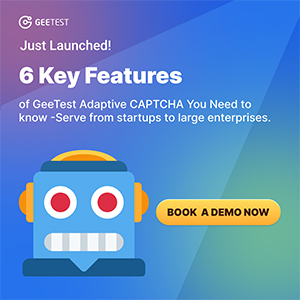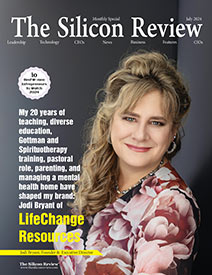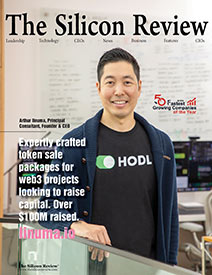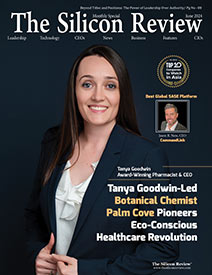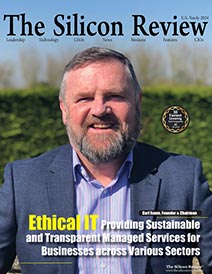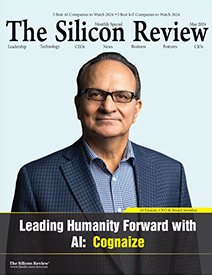50 Leading Companies of the Year 2022
Bringing Marketing Success To A Higher Level: How The Old And New Merge Into Multichannel Marketing Success
The Silicon Review
![]()
In the highly competitive world we live in, marketing plays a crucial role in a business's success. Every business entity must understand how marketing works and have a clear roadmap in place. Marketing educates potential customers about your product because when people are well-informed about the product, the sales will increase. Marketing is a great avenue for many businesses to create revenue opportunities. The success of a business is determined by the objectives and goals set by the business leader. It is very important to set clear goals because only then the employee will be aware of their targets. Every known successful business has a compelling marketing strategy. These strategies include advertisements and promotions along with a strong relationship with the media.
Globally there are various marketing companies delivering excellent services, but Creative Direct Marketing Group (CDMG Inc) stands out from the rest. A leader in target advertising, CDMG Inc is a full-service, direct response advertising and digital marketing agency with one goal in mind: increasing your response, market presence, and profits through “accountable advertising.” For more than 40 years, CDMG Inc has helped turn entrepreneurial start-ups into large companies…and large companies into multibillion-dollar businesses. One of the most successful ad agencies in America with clients worldwide and with over 97 professional advertising awards being won over the United States and the world. Over the years, CDMG Inc has made multimillionaires and multi-million-dollar corporations from dreams. They have turned large companies into multi-billion dollar corporations. How have they done it?
We asked Craig Huey and Caleb Huey of Creative Direct Marketing Group if they would share their secrets to successful advertising and marketing in a changing market economic climate.
Q. Craig, when did you start Creative Direct Marketing Group?
Craig: When I was out of college, I had a choice of going into teaching or continue with advertising and marketing, which I had been doing for several years. I took the path of marketing and advertising and I've never looked back. It's enabled me to help grow companies and to expand companies. Over the years, there have been many changes.
Q. How did you keep up with those changes?
Craig: I used the discipline of looking at new trends, understanding markets and making sure that we provided a service that exceeded expectations.
Caleb Huey: He is being modest. He also was able to stay one step ahead of the competition. Having one of the first companies for their clients to create infomercials when they were legalized in 1984 and to create a dedicated landing page for a marketing campaign in the late 1990s and to incorporate digital marketing with the traditional market.
![]()
Q. You have written a book, The Multichannel Integrated Marketing: 29 Trends for Creating a Multichannel, Integrated Campaign to Boost Your Profits Now. Can you tell us why you decided to do that?
I will let Caleb describe that because basically we found that responses to campaigns were better when we use an integrated campaign. And we use multichannel.
Caleb: Today’s marketing is completely different than that of 20 years ago, 10 years ago, or even 5 years ago. As an agency, we are constantly looking for new ad-tech that we can test and incorporate based off success. The book describes the principals of A/B split testing setup across Creative, Audience Targeting and Data, and Channels. The use of today’s ad tech allows us to then connect the winning Creatives and Audiences across the winning channels, including traditional outlets like direct mail and TV for more in-home touch points vs strictly online.
Q. Caleb, how did you help bridge the generation gap with your father Craig?
Caleb: I’ve helped drive the digital component, testing new ad tech to see if they are fluff or effective. My focus has been in creating the most valuable audiences to serve a message to, finding a likely buyer using transactional data modeling TDM. We view good, solid data as a key seed to our successes within digital marketing. We use that “seed” to grow a more refined audience that we then pair with the right creative for that audience. This has increased responses by using an integration of Facebook, pre rolls, addressable TV, Google, email, and other sources, with similar data of those we're sending to in a direct mail campaign. This was a phenomenal discovery that has helped clients grow in response but also retention.
Craig: I would call it supercharging the response by utilizing multi-channel campaigns that because of direct marketing stand on their own. They're accountable. We know what works and what doesn't work.
You have tested over 10,000 variables and mailed over a billion pieces of mail. The transition to the digital must have been hard.
Craig: Not really. What we have found, whether we're creating a digital campaign website, we're dealing with human nature. That's the value of direct response marketing. You have copy; we call it direct response copy. That's different than editorial copy. Different than journalistic copy. Different than traditional advertising copy. It's copy that persuades. It's copy that gives benefits. It's copy that convinces a person to respond. It has a call to action where we can measure the results. It's a whole different type of advertising. When I started doing direct mail, TV campaigns, and radio, clients would only continue with us if we produced results. It was accountable. We had an 800 number. In the 80s and 90s, that was unique. That was something 95% of the agencies would never even consider. In fact, they would ridicule. Today, everybody, because of digital marketing is talking about bottom line results. We don't care about impressions. We don't care about creating an image. We really care about generating leads, generating sales, and making the company grow.
Caleb: He’s right the landscape is always changing, but human nature doesn’t. We need to highlight benefits, have a compelling offer and have a clear and unconfusing call to action. It doesn’t matter if that’s presented in an ad through a DSP or a Social Channel, or a physical direct mail piece.
Q. If there was one piece of advice that you would give to other marketers, agencies, marketing directors, what would it be?
Caleb: Never put all of your eggs in one basket, test everything, and match back results. Real success comes from growing a company’s sales, and that’s how we’ve kept clients for as long as 35 years….That’s longer than I’ve been alive so things obviously change, and you need to change with them by testing new channels and techniques.
